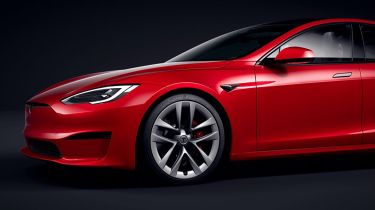Tesla Model S hatchback - Reliability & safety
The Model S should be very safe, but Tesla's reliability is a big concern
Despite utilising relatively new technology, electric cars are generally much simpler mechanically than their petrol and diesel counterparts, meaning there are fewer moving parts to go wrong. This doesn’t appear to be the case with Teslas, however, as 44% of owners reported a fault with their car within the first year of ownership in our 2022 Driver Power customer satisfaction survey. Build quality was also a big concern, and many also complained about the subdued styling of the brand’s cars.
Regardless of all this, however, Tesla still managed to achieve second place out of 29 manufacturers in our brand survey. It appears brand loyalty is strong with Tesla owners, with many praising their car’s cutting-edge technology and smooth electric powertrains.
Tesla Model S safety
Independent safety organisation Euro NCAP recently retested the Model S in 2022. It had previously scored a full five stars when it first launched, however even undergoing stricter testing, it scored five stars again. Safety assists scored an impressive 98%, while adult and child protection scores were above 90% in testing – even though the Model S isn’t equipped with knee airbags front or rear. This is an improvement on its previous, more lenient test results, showing that Tesla is continuing to develop safety across its range.
During a roof crush test in America, the Model S actually broke the machine being used to carry out the test. Its last reading was 4Gs, which effectively means four Model S cars could be stacked on top of each other without the roof of the bottom one caving in.
Among other features, the Model S comes with a lane-departure warning system and a speed assistance system that can recognise the local speed limit and warn you if that limit is exceeded. And if you choose the optional Autopilot system, you can experience a fledgling form of autonomous driving, as the car can execute lane changes, steering and handle stop-start traffic without any driver input – provided they are paying attention to the road.












